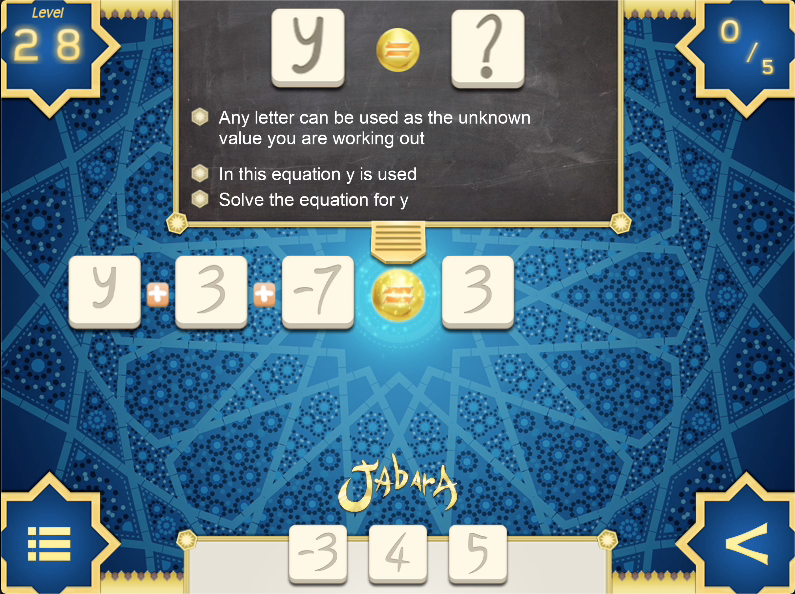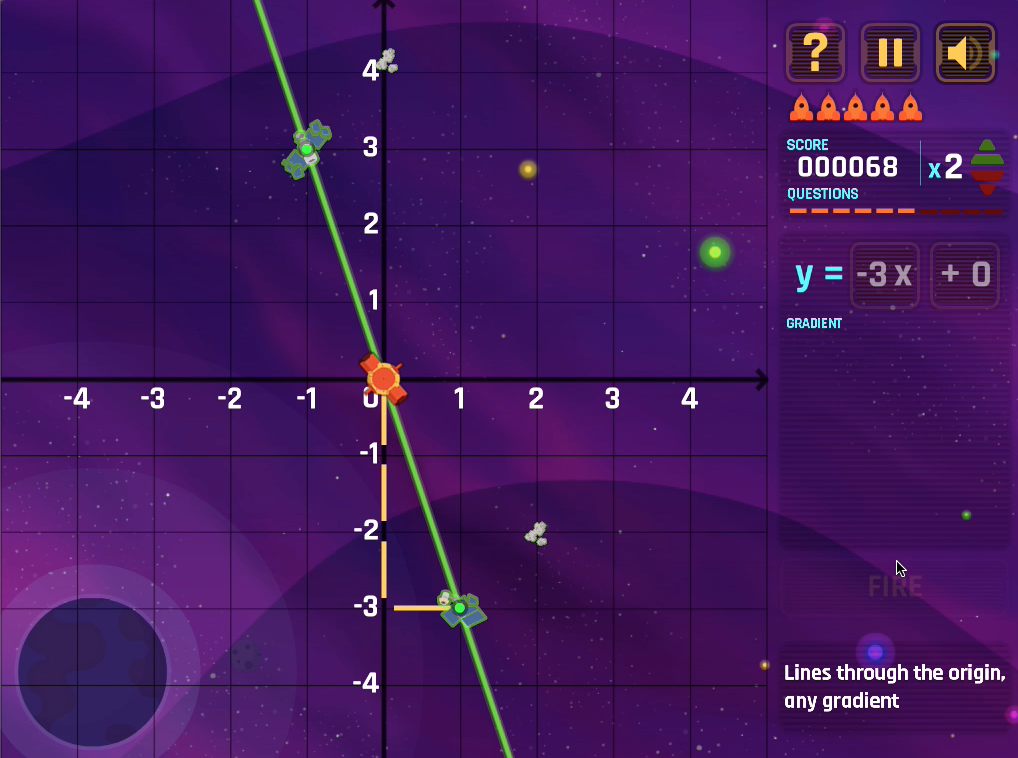
The Covid-19 outbreak led to a huge shift towards online and remote learning but the transition was fraught with challenges for both students and teachers alike.
The use of edtech increased dramatically to accommodate the move to distance learning. However, students’ attainment throughout lockdown has remained inconsistent with many struggling to focus in their new environment, as well as finding it difficult to get to grips with the technology they may not have used before. Additionally, a large number of students across the country struggled because they were unable to access the necessary technology, resources and equipment to be able to successfully study from home.
Providing students with access to the equipment they require to learn remotely is key to bridging the gap between the classroom and home learning. The next step is to ensure that when using these resources, students remain effectively engaged.
We know that when students persistently get wrong answers it affects their confidence. Some respond by giving up, thinking, ‘This is too hard for me,’ while others accept that it is a challenge and find ways to better their scores. Educational researcher Carol Dweck coined the terms ‘fixed mindset’ and ‘growth mindset’. Now more than ever we need our students to grow and to become resilient independent learners who will persist even when the going gets tough.
The psychology of games
Game-based learning is one way to make this happen. It uses technology students are familiar with and sets tasks that will keep their focus. Time and time again, they try different approaches until they find the winning formula that allows them to progress to the next level where there are new and harder challenges.
In the virtual world they are engrossed for hours, undeterred by failure. They are using logic and problem solving skills and the main reward is a score and a sense of accomplishment. Why is this?
Most well-designed games give us pleasure and make us want to return for more. To understand this, we need to know a little about how the human brain works in terms of positive and negative feelings.
We are programmed to seek rewards whether that is food and shelter or praise and a sense of achievement. Often, in order to get these positive rewards, we need to put in a lot of sustained effort. However, the digital generation is accustomed to short-term, but constant rewards – the type they get in video games. As soon as they experience failure, they are rapidly moved on to the next part of the game where they can win.
Even when they fail, their motivation remains high because they know they will soon be rewarded – so long as they persevere.
Another key factor is that the human brain does not differentiate between real-life and artificial rewards, which explains the motivating effect that video games have on people. We all want to keep trying because we know we will eventually be rewarded even if we get just a little further in a level, by getting a higher score for example.
On the flip side, there’s the expectation of failure when it comes to gaming. When we start a level, we know we might not succeed at the first attempt, especially as we progress to different stages and the level of difficulty gradually increases. Games are designed for graceful failure and to motivate players to try again.

Often in games, especially the ones designed for children, failing a level does not have any consequences other than having to start over again. This relieves the pressure which in turn feeds the motivation to try again. So, it is easy to see why these motivating gaming concepts can be applied learning.
How growth mindset connects to gaming
To start, let’s look at what growth mindset is exactly. Growth mindset goes further than just saying, ‘Nice try!’ when a student fails to answer a problem correctly. It’s about encouraging students to try again, perhaps with a different approach, and continue trying until they find a way to solve the problem correctly.
Carol Dweck explains: ‘The growth-mindset approach helps children feel good in the short and long terms, by helping them thrive on challenges and setbacks on their way to learning. When they’re stuck, teachers can appreciate their work so far, but add: ‘Let’s talk about what you’ve tried, and what you can try next.’ The focus is on progression and trying new approaches until the student finds one that works for them and helps them to master the topic.’
That drive to try again, to persevere, could be frustrating for students which in turn could affect their motivation. But, as we’ve seen, video games are built on this concept. Alternating failure with success is the core concept at the heart of many video games, which is why growth mindset and games go together so well. It’s about being driven to try again, by maintaining the child’s interest, by keeping the activities fun with positive results and improved scores.
A key point to remember is that encouraging a growth mindset has a huge positive impact on a student’s motivation and even lowers their maths anxiety levels. Researcher Jo Boaler has undertaken extensive research on the effects of applying a growth mindset approach in the classroom:’ Instead of giving students damaging fixed mindset messages about their potential, teachers can take the opposite approach and offer students a growth mindset pathway […]
Instead of measuring each step as an end point, a final assessment, they see it as a step on a journey and so the yare motivated to retrace their path and try different approaches.
Boaler goes on to explain: ‘After teachers made the assessment changes, students’ math anxiety, formerly commonplace because of the testing culture, disappeared. Instead, classrooms were filled with self-confident students, which led to higher levels of motivation, engagement and achievement.’
Successfully introducing game-based learning
The following tips will hopefully provide a useful guide to ensure the integration of game-based learning is successful:
Make sure the games are simple and easy to follow – game-based learning should aide the teaching and learning process, not complicate it, so ensure instructions are easy to follow and teaching and learning objectives are clear. This will ensure students can maximise their time most effectively.
Trial and error – there are several gamified resources on the market. Make sure you try them out yourself and are as involved in the purchasing decision as possible. We know that teachers are best placed to assess the suitability of learning resources for their class but also to predict how their students will respond to learning materials, so this insight is invaluable. Additionally, should students have any questions when playing the game, teachers will be able to support them as they have experienced the game themselves.
Set expectations for healthy competition – Game-based learning is, for the most part centred around students competing with themselves. However, class leader boards can provide added incentives to keep trying to improve performance. Make sure this fosters a culture of healthy and positive competition so that students remain motivated and engaged in their learning.
- Different levels – Games can allow children to operate at different levels of thinking and to learn from each other. In a group of children playing a game, one child might be encountering a concept for the first time, another may be developing his/her understanding of the concept, a third consolidating previously learned concepts
- Assessment – children’s thinking often becomes apparent through the actions and decisions they make during a game, so the teacher has the opportunity to carry out diagnosis and assessment of learning in a non-threatening situation
- Home and school – Games provide ‘hands-on’ interactive tasks for both school and home
- Independence – Children can work independently of the teacher. The rules of the game and the children’s motivation usually keep them on task.
Game-based learning
It seems to be a no-brainer then, to add games into learning. But of course, this is not all there is to it. A game can include maths, but not actually be educational. It must focus on the content and teach or reinforce concepts. This is why
games used for educational purposes should be developed by researchers and teachers and be based on sound pedagogical principles.
Games must also be engaging, offer different levels of challenge and pay heed to the techniques used by the most successful video games. This ensures that when they fail at a game or a level, students are not negatively impacted but instead feel motivated to try again and succeed and when they do finally succeed, the feeling of accomplishment outweighs any negative thoughts had on the path to their success.
Game-based learning helps not only to engage students and increase their motivation but also to develop a growth mindset too.
Register for free
No Credit Card required
- Register for free
- Free TeachingTimes Report every month